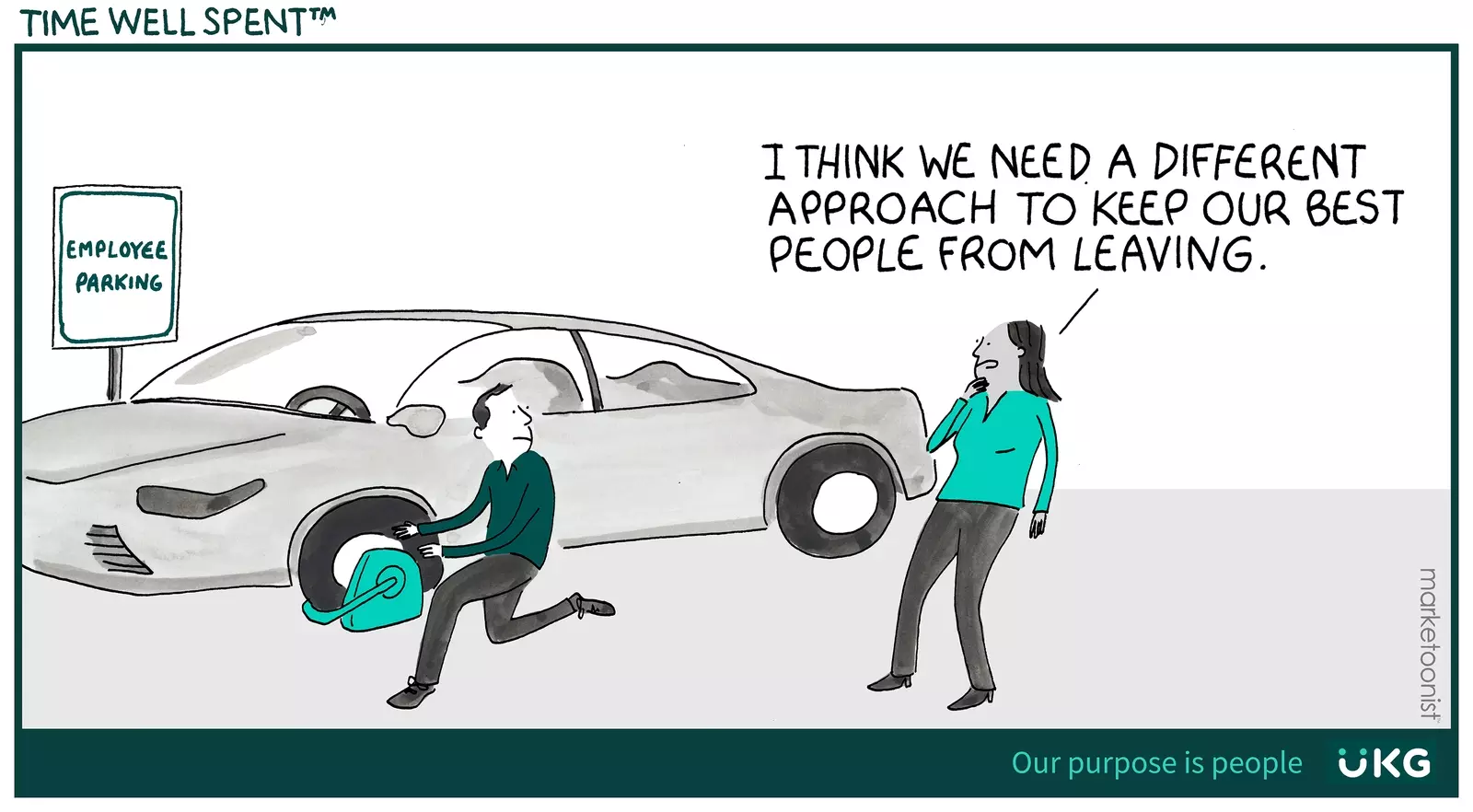Another 4.5 million people quit their jobs in March 2022, according to the latest Bureau of Labor Statistics (BLS) report. There were also 11.5 million new job openings, which is the highest level ever recorded since the BLS began tracking in December 2000. Unemployment rates mirror pre-pandemic lows. On the plus side, these figures signal economic strength. On the other hand, they represent continued challenges for employers who have now been battling the Great Resignation for more than a year.
There are numerous factors driving this candidate’s market, from altered employee expectations to record-high salaries and signing bonuses. It’s a historic, unprecedented time, and the underlying message is that the balance of power between employees and employers has finally shifted in favor of the employee.
But there’s a plot twist: Almost half of employees wish they’d never left.
According to a recent UKG study of 1,950 pandemic-era job quitters around the world, 43 percent felt they were better off at their old jobs. Almost as many felt they left their jobs too quickly, which isn’t surprising, considering a whopping 41 percent had considered quitting for fewer than 30 days before they turned in their resignations. Only 27 percent had thought about leaving for more than three months — and nearly one in five didn’t have another job lined up when they quit!
It’s clear that the decision to quit was made somewhat impulsively by many employees, and, as a result, we’re seeing a significant number of “boomerang” employees. Nearly one in five employees surveyed had already boomeranged back to a job they quit during the pandemic, and, for those who hadn’t yet returned, 41 percent would consider going back (if it were an option).
What is it that makes people return to old pastures when they realize “new” isn’t always “greener”? According to the report (and common sense), good managers make all the difference. Boomerang employees were much more likely than other respondents to say that their managers fostered an environment where communicating frustrations was possible, made an effort to keep them, and conducted at least one — if not multiple — stay interviews.
So, while clichés tell us that people leave managers, not jobs, this data tells us that managers are also why people come back. But most managers would prefer to retain their talent long-term than re-sign them following resignation. With that in mind, here are five actionable strategies managers can prioritize to build trust with their teammates and proactively improve retention.
1. Provide avenues for open and honest discussions.
Employee surveys are valuable, but they should always be paired with one-on-one’s, stay interviews, and meaningful conversations that build trust and camaraderie. The first step to preventing people from leaving is ensuring they feel comfortable coming to you with frustrations and concerns. You can’t fix what you don’t know. This survey found that job leavers were twice as likely to feel they had made their decisions to quit too quickly when they had managers who fostered an environment where they felt comfortable expressing opinions and frustrations.
2. Make more time to manage.
Unfortunately, many managers are saddled with so many competing responsibilities that it can be challenging to spend adequate time actively managing their people. The findings from this study suggest that even the best managers need to spend more time having wellbeing discussions, career pathing, and aligning business objectives with employee needs and contributions.
3. Encourage employees to be transparent about their job searches.
We are living amid a historic candidate’s market, and there are plenty of great opportunities for your people. When your people feel comfortable sharing their job searches with you (66 percent of surveyed boomerang employees did!), you have the opportunity to show them why staying can be one of those great opportunities, too.
4. Show you’re working to make changes.
According to this study, employees said the top changes their companies/managers could have made to retain them include: increasing pay; offering a promotion or title change; lessening workload by hiring more support; allowing for greater remote-work flexibility; and offering greater independence in the role. While some of these fall outside the scope of a manager’s control, most of them are areas where managers can partner with their people to bring desired changes. If it will take some time to implement, often all you need to do is keep them updated on what you’re doing on their behalf behind the scenes.
5. (If all else fails) Make the first move.
If you had a good employee leave, be sure to keep in touch. While many respondents in this study wanted to return to their previous employers, only 26 percent had reached out to reconnect. Initiating that discussion could be as easy as sending a one-off email or spontaneous text to check in. If you let them know the door isn’t completely shut, they’re much more likely to broach the subject of returning.



